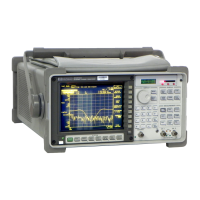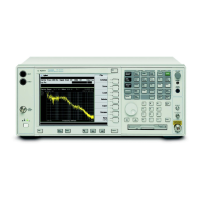Frequency Resolution
The frequency resolution of an FFT
analyzer is usually stated in number of
lines. The most common offerings are
400 and 800 lines, although
some analyzers—such as the
Agilent 35670A— offer variable
resolution. A 400-line FFT analyzer,
set up to display a 4 kHz span, would
have a frequency resolution of
4000 Hz per 400 lines—10 Hz per line.
The length of the time record
determines how long a given
measurement will take and the
maximum frequency that you can
measure.
For example, an 800-line analyzer
measuring a 1 kHz span requires a 0.8
second time record. A 3200-line
analyzer measuring the same 1 kHz
span requires a 3.2-second time record.
This relationship is
independent of processing speed. The
smaller the span, the longer the time
record required.
You can easily make calculations to
determine values for four inter-related
functions; maximum frequency,
time-record length, frequency
resolution, and frequency span:
• Maximum frequency =
(N/2) x (1/time-record length),
where N=number of samples
• Time record length =
number of lines/frequency span
• Frequency resolution = 1/time-record
length
• Frequency span =
(frequency resolution x FFT lines)
Agilent 35670A
Operator's Guide Setting Up a Measurement
Part I-7

